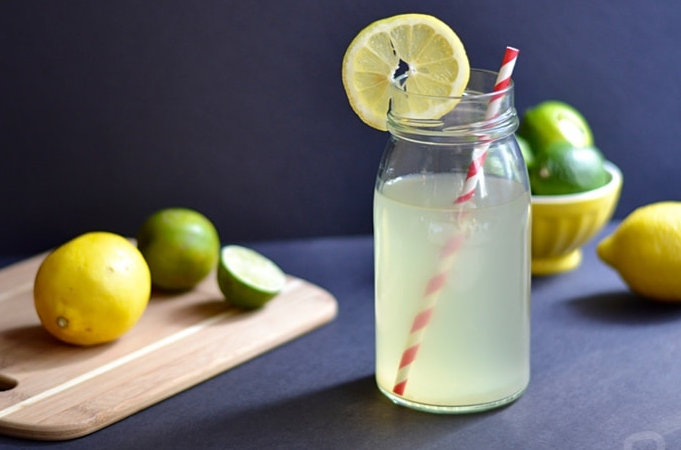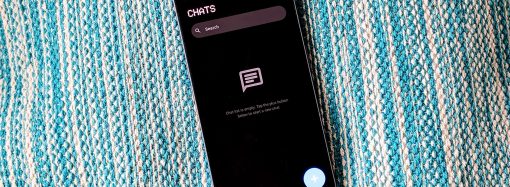In the wellness world, not all salts are created equal. Two of the most widely praised natural salts—Celtic Sea Salt and Pink Himalayan Salt—have risen in popularity for their electrolyte content, health benefits, and holistic appeal. But which one is truly better for hydration, performance, and overall well-being? Welcome to the ultimate electrolyte Drinks. In this
In the wellness world, not all salts are created equal. Two of the most widely praised natural salts—Celtic Sea Salt and Pink Himalayan Salt—have risen in popularity for their electrolyte content, health benefits, and holistic appeal. But which one is truly better for hydration, performance, and overall well-being?
Welcome to the ultimate electrolyte Drinks. In this comprehensive guide, we’ll explore the origin, mineral profile, health benefits, and practical uses of both Celtic Sea Salt and Pink Himalayan Salt—so you can decide which one belongs in your hydration routine.
Why Electrolytes Matter
Before we dive into comparing the salts, let’s quickly revisit why electrolytes are so essential. Electrolytes are minerals in your body fluids that carry an electric charge. These minerals—sodium, potassium, magnesium, calcium, and chloride—play a vital role in:
-
Hydrating your cells
-
Balancing fluid levels
-
Supporting muscle contractions
-
Regulating nerve signals
-
Controlling blood pressure and pH levels
Every time you sweat, urinate, or even breathe, you lose electrolytes. Without regular replenishment—especially during exercise, heat exposure, or illness—you may experience fatigue, cramping, dizziness, and poor performance.
While sports drinks can help, many are loaded with sugar and artificial ingredients. That’s why natural salts like Celtic Sea Salt and Pink Himalayan Salt have gained attention as clean, effective alternatives.
Celtic Sea Salt: A Mineral-Rich Ocean Harvest
Celtic Sea Salt, also known as “Sel gris” or “gray salt,” is harvested from the pristine coastal waters of Brittany, France. Using traditional Celtic methods, salt farmers allow seawater to evaporate in clay-lined salt beds, preserving the salt’s natural mineral content and moisture.
Key Features:
-
Gray, slightly damp texture
-
Harvested with wooden tools
-
Rich in magnesium, chloride, and trace minerals
-
Unrefined and unprocessed
Mineral Content:
Celtic Sea Salt contains over 80 trace minerals, including:
-
Magnesium – supports muscle function and heart health
-
Chloride – aids digestion and fluid balance
-
Sodium – regulates blood pressure and hydration
-
Potassium, zinc, iron, and iodine
Because it retains its natural moisture, Celtic Sea Salt is quickly absorbed in the body, making it an excellent option for hydration and electrolyte replacement.
Pink Himalayan Salt: Ancient Crystals from the Mountains
Mined from the Khewra Salt Mine in the Himalayan foothills of Pakistan, Pink Himalayan Salt is a fossilized sea salt formed over 250 million years ago. Its beautiful pink hue comes from iron oxide (rust), and it is often touted as one of the purest salts on Earth.
Key Features:
-
Dry, crystalline texture
-
Mined by hand and minimally processed
-
Pink color due to high iron content
-
Popular for cooking, lamps, and bath soaks
Mineral Content:
Pink Himalayan Salt boasts up to 84 minerals, including:
-
Sodium – the main electrolyte lost through sweat
-
Potassium – important for nerve function
-
Calcium – supports bones and muscles
-
Iron – essential for blood oxygen transport
-
Magnesium, zinc, and phosphorus
It’s widely used for both culinary and wellness purposes, offering a mild flavor and subtle mineral boost.
Side-by-Side Electrolyte Comparison
| Electrolyte / Mineral | Celtic Sea Salt | Pink Himalayan Salt |
|---|---|---|
| Sodium | Slightly lower | Slightly higher |
| Magnesium | Higher | Moderate |
| Potassium | Moderate | Higher |
| Calcium | Moderate | Higher |
| Iron | Trace amounts | Noticeably higher |
| Moisture Content | Damp | Dry |
| Processing | Hand-harvested, natural | Mined, minimally refined |
| Taste | Bold, briny | Subtle, earthy |
Which Salt Wins for Hydration?
🏆 Best for Electrolyte Replenishment: Celtic Sea Salt
When it comes to Hydration and replenishing lost electrolytes, Celtic Sea Salt has the upper hand. Its higher magnesium and chloride levels, combined with its moist structure, help the body absorb nutrients more effectively. This makes it ideal for:
-
Athletes
-
Sauna users
-
People on ketogenic or low-carb diets
-
Anyone experiencing dehydration or fatigue
The bioavailability of minerals in Celtic Sea Salt gives it an edge for those seeking quick results.
🧂 Best for Daily Use and Mineral Support: Pink Himalayan Salt
If your focus is on daily wellness rather than immediate hydration, Pink Himalayan Salt is a great choice. It provides a wider array of trace minerals and adds a pleasant flavor to food. It’s also a good option for:
-
Cooking and seasoning
-
Iron supplementation
-
Gentle electrolyte support
-
Natural detox routines
For ongoing support, many people use Pink Himalayan Salt as their everyday salt and add Celtic Sea Salt during heavy exercise or heat exposure.
Real-Life Uses: How to Incorporate These Salts
💧 Homemade Electrolyte Drink with Celtic Sea Salt:
-
1 liter filtered water
-
1/4 tsp Celtic Sea Salt
-
Juice of half a lemon
-
1 tsp raw honey (optional)
This mix mimics the effect of store-bought electrolyte drinks—minus the sugar and additives.
🧃 Morning Mineral Boost with Pink Himalayan Salt:
-
Warm water
-
A pinch of pink salt
-
1 tbsp apple cider vinegar
-
Dash of cinnamon (optional)
Great for digestion, mineral support, and alkalizing the body.
Myths vs. Facts
Myth: Natural salt detoxes your body.
Fact: While rich in minerals, no salt “detoxes” your body. Your kidneys and liver handle detoxification.
Myth: Pink salt is much healthier than any other salt.
Fact: It contains trace minerals, but in small amounts. It’s healthier than refined table salt, but not a miracle cure.
Myth: Salt causes dehydration.
Fact: In moderation, natural salt helps your body absorb and retain water more effectively—especially when paired with adequate fluid intake.
The Verdict: Which One Should You Choose?
Choose Celtic Sea Salt if:
-
You’re physically active and sweat a lot
-
You need fast-acting hydration support
-
You prefer a salt rich in magnesium and chloride
-
You want a salt closer to its natural, oceanic source
Choose Pink Himalayan Salt if:
-
You want a versatile cooking salt with health benefits
-
You’re seeking additional iron and potassium
-
You enjoy a smoother, milder flavor
-
You’re using it in bath soaks or wellness rituals
Can You Use Both?
Absolutely. Many people combine the two to get a broader range of electrolytes and flavors. For example, use Pink Himalayan Salt in your meals, and Celtic Sea Salt in your hydration drink or pre-workout mix.
How to Choose the Right Salt for You: A Quick Quiz
Here’s a quick self-assessment to guide your choice:
| Question | If “Yes,” Choose… |
|---|---|
| Do you sweat heavily or work out intensely? | Celtic Sea Salt |
| Do you want a flavorful everyday cooking salt? | Pink Himalayan Salt |
| Are you following a keto or fasting regimen? | Celtic Sea Salt |
| Do you need more iron in your diet? | Pink Himalayan Salt |
| Do you prioritize maximum hydration efficiency? | Celtic Sea Salt |
| Do you enjoy adding salt to detox baths? | Pink Himalayan Salt |
Final Takeaway
Natural salts like Celtic Sea Salt and Pink Himalayan Salt offer far more than just flavor—they’re mineral-rich tools that support electrolyte balance, hydration, performance, and overall well-being. Unlike heavily processed table salt, these ancient, unrefined salts preserve the trace elements your body craves.
So, who wins in the ultimate electrolyte showdown?
-
Celtic Sea Salt takes the crown for hydration, bioavailability, and magnesium-rich support—perfect for high-performing bodies and anyone looking to replenish fast.
-
Pink Himalayan Salt wins for culinary flexibility, trace mineral variety, and iron support—great for everyday use and gentle wellness.
The real champion? You, when you choose natural, functional ingredients that fuel your lifestyle.
Incorporate these salts mindfully, and listen to your body. Whether you’re running a marathon, doing a HYROX event, or simply upgrading your cooking routine, choosing the right salt can make all the difference.
Bonus Tip: Uthrive Hydration and Natural Salt Blends
If you’re looking for a high-performance hydration solution, check out Uthrive Hydration—an Australian-made clean sports drink company that prioritizes natural electrolytes and functional ingredients. Unlike many commercial sports drinks, Uthrive products often incorporate sea minerals, coconut water, and natural flavorings, steering clear of synthetic fillers.
Pro tip: You can DIY your own Uthrive-style hydration mix with:
-
Filtered water
-
1/8 tsp Celtic Sea Salt
-
A pinch of Pink Himalayan Salt
-
A squeeze of lime or lemon
-
A dash of pure maple syrup or raw honey
Final Thoughts
In the battle of Celtic Sea Salt vs. Pink Himalayan Salt, there’s no one-size-fits-all winner. Both offer distinct benefits, and the best choice depends on your goals—whether it’s performance, hydration, or daily mineral intake.
For those focused on hydration and athletic recovery, Celtic Sea Salt is a powerhouse electrolyte source. For everyday wellness and culinary versatility, Pink Himalayan Salt is a valuable addition to your pantry.
Frequently Asked Questions (FAQ)
1. Can I use both Celtic Sea Salt and Pink Himalayan Salt in the same day?
Yes, you can. There is no harm in using both salts as part of your daily routine. In fact, alternating or combining them can give you a broader spectrum of minerals, helping support everything from hydration to immune function. For example, you might use Celtic Sea Salt in your morning hydration drink and Pink Himalayan Salt in your meals throughout the day.
2. Is either salt better for people on a keto or low-carb diet?
Yes—Celtic Sea Salt is especially helpful for people following keto or low-carb diets. When carbohydrate intake is low, the body tends to excrete more sodium and water, increasing the need for electrolyte replenishment. The higher magnesium and sodium content of Celtic Sea Salt makes it a great companion to ketogenic nutrition.
3. Are there any risks to using natural salts?
As with all salts, moderation is key. Overconsumption of any salt—even natural ones—can lead to elevated blood pressure or kidney strain in some individuals. However, because natural salts are less processed and contain balancing minerals like magnesium and potassium, they may be better tolerated than refined table salt. Always speak to your healthcare provider if you have high blood pressure or kidney issues before increasing your salt intake.
4. What about iodized salt—do these natural salts contain iodine?
Celtic Sea Salt contains natural iodine in trace amounts, while Pink Himalayan Salt contains very little to no iodine. If you’re not eating iodine-rich foods like seaweed or dairy, and you’ve switched to natural salts, you may need to get iodine from other sources or supplements.
















